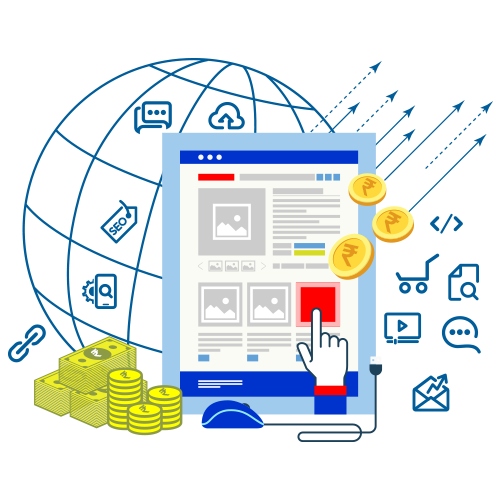
Pay-per-click is commonly associated with first-tier search engines (such as Google Ads and Bing Ads). With search engines, advertisers typically bid on keyword phrases relevant to their target market. In contrast, content sites commonly charge a fixed price per click rather than use a bidding system. PPC "display" advertisements, also known as "banner" ads, are shown on web sites with related content that have agreed to show ads and are typically not pay-per-click advertising. Social networks such as Facebook, Linkedin, Pinterest and Twitter have also adopted pay-per-click as one of their advertising models.
- Industry analysis
- Ad copy performance testing
- Google Analytics tracking
- Landing page creation
Pay-per-click, along with cost per impression(CPM) and cost per order, are used to assess the cost effectiveness and profitability of internet marketing. Cost Per Thousand Impressions(CPM) will helpful to reach our brand broadly around the google and their connected sites, advertiser will pay only every 1000 impressions of ad. Pay-per-click (PPC) has an advantage over cost per impression in that it conveys information about how effective the advertising was. Clicks are a way to measure attention and interest: if the main purpose of an ad is to generate a click, or more specifically drive traffic to a destination, then pay-per-click is the preferred metric. Once a certain number of web impressions are achieved, the quality and placement of the advertisement will affect click through rates and the resulting pay-per-click.
